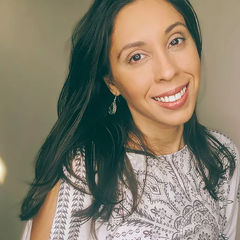Last Updated November 10, 2023 (originally published February 9, 2021)
While the worst of the COVID-19 pandemic may be behind us, there are still important lessons to be learned as we look back on that life- and world-altering time. Black, Latinx and Native American communities experienced disproportionately high rates of COVID-19 cases and deaths. In many cases, this is likely due to social determinants of health, which are shaped by historical, systemic, financial and structural factors. Behind these racial and ethnic disparities lies a web of systemic and socioeconomic issues that make it more difficult for people in these communities to access healthcare and related resources, have the opportunity to socially distance and work from home. Poverty on its own was associated with a higher risk of intensive care unit admission. While the pandemic made these disparities clearer for us to see, and it has certainly pushed even more people into poverty, financial hardship and food insecurity, the bottom line is that these realities are not unique to the pandemic—they have been present all along.
These statistics serve to remind us that the people who could use health coaching and fitness services the most are also the ones who have the most barriers to access these services. As a Puerto Rican woman born and raised on the island, my family and I experienced significant barriers to accessing basic healthcare. Growing up, health-related services such as health coaching wouldn’t have even crossed our minds because there were none of those services available, and we had no context that showed us what a patient-centered approach would look like or how it could work. To us, healthcare was more illness-related and need-based when someone was sick.
I now recognize how much of a difference it would have made in all of our lives to have had access to better health education and resources within our community, and the long-term beneficial changes that a health coach could have provided. This is why I am driven by a desire to serve my community and promote health justice. I believe that health coaches and nutrition and exercise professionals hold a crucial position in helping empower those affected by health inequity by providing important knowledge and skills that can help them engage in lifestyle changes that positively influence their health.
As a health coach, I have committed myself to promoting health justice by ensuring my services remain as accessible as possible for those who may need them the most. Here are some methods I’ve implemented to make this possible:
Sliding Scale Fees: These are variable prices to services based on a client’s ability to pay. I like to think about my work in terms of reciprocity. Considering a fair range of value for your time, rather than one strict number, can make services more accessible and potentially increase the flow of new clients. A sliding scale allows clients that have the financial means to pay for the higher end of the value of your service, while allowing others who might have a financial barrier to have access to your services, as well.
Modified Sessions: For some people, even the lower end of the sliding scale may be too high of a cost for one session. One way I’ve addressed this has been by offering modified sessions that align with both my client’s finances and my own business needs. For example, I worked with a group of three sisters who participated in a health coaching and exercise program together. We would meet up and go through a check-in, an educational portion, and lastly exercise all together. I was able to support them individually through virtual resources, journals and individual check-ins during the time between sessions. But, by implementing group coaching and exercise, I was able to lower my clients’ individual cost for the program significantly, while also maintaining the value of my time. An additional benefit of this model was that the sisters were able to provide support for each other through the process. Combining health coaching and exercise services is a great option for those who have multiple certifications and a scope of practice that includes exercise program design and implementation.
Free Initial Consult, then Offer Resources: I always offer a free 15-minute consultation with any potential client who expresses interest in working with me. Not only does it serve to ensure the client's requests are within your scope of practice, or if the client would potentially need a referral or have any risks with certain activities, but it also allows you to connect and create rapport with them. Additionally, the process can offer insight into the financial barriers the client may be experiencing. During these sessions, after determining I am indeed able to help the client and that a program with me would be a good fit, I also ask what their budget is. Then, we can explore options around this. For example, I had some clients who couldn’t commit to pay for the lower end of my sliding scale, as it was still too expensive for their current financial situation. Knowing that I couldn’t offer my time for a lower cost, I offered a modified 45-minute session that was focused on one specific concern, such as exercise. By doing so, I was able to lower the cost proportionally to the decrease in time, which made it financially accessible to them and possible for me. If, for any reason, the program is not a good fit for the client, I also try my best to use my knowledge to share other resources or refer to other practitioners that could help the client.
In Conclusion
These strategies have helped me support my community and my clients, and have proved successful for my health coaching practice, as well. They have been the small steps I have been able to take toward an ultimate, larger goal of promoting health justice, equity and accessibility to all.




 by
by 



 by
by